Fluffy, flavorful, and fully loaded with nutrients, complete your breakfast with this easy-to-make POTATO BREAD. This baked goodie is a tastier alternative to your regular white bread. Perfect for toasts, sandwiches, and even just regular slices paired with your favorite spread.

We’re all familiar with chips, fries, and boiled potatoes, and I know that we, potato lovers, love it most as mashed. You might think that potatoes are only for Thanksgiving but I’ll show you that you can eat them every day, guilt-free! This Potato Bread is gonna be your new favorite breakfast piece.
What is Potato Bread?
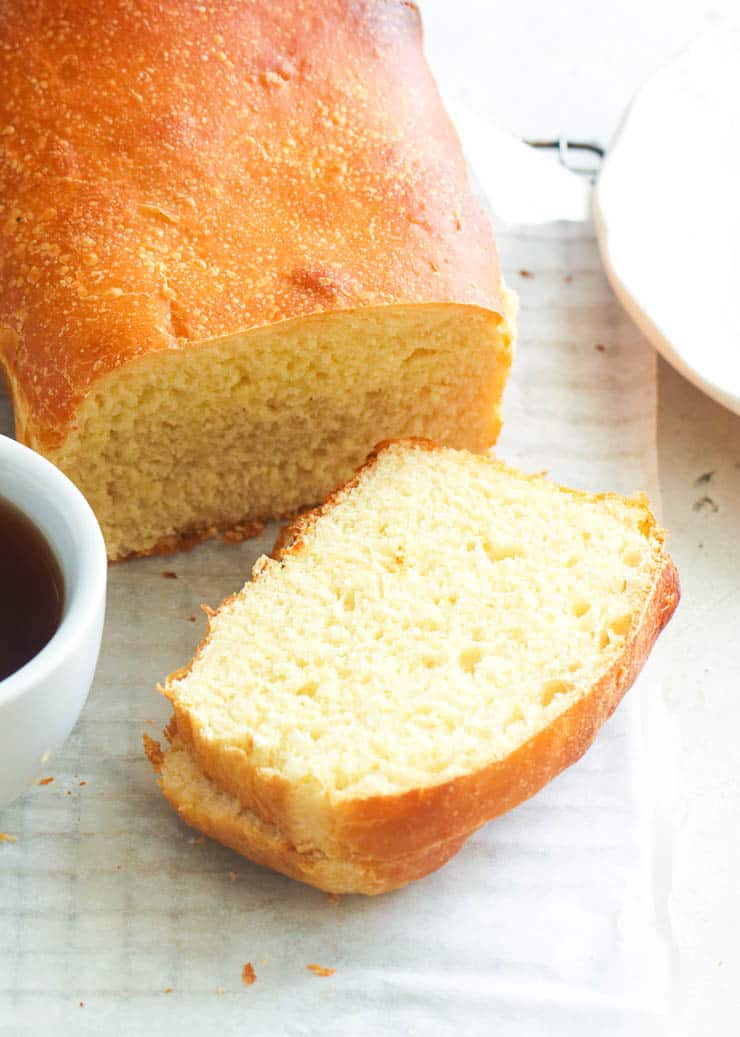
Potato Bread is basically just regular bread but a high percentage of potato starch is used. The change in this proportion affects the overall taste and texture of the finished product. Using mashed potatoes in this bread recipe is also a great way to ensure that it stays moist longer.
Origin
The recipe on how to make bread from potatoes has been around since the 1600s. The process developed from the tedious recipe to an easier step-by-step version. Potato bread is a breakfast staple food in some parts of the world. This is why it’s practical to know how to make potato bread.
So why do I consider that it’s healthy-ish? Well, potatoes have lots of Fiber, Folate, and Vitamin E which are really good for your digestion. And we all know that there are a ton of benefits coming from good digestion.
Is Potato Bread Gluten-Free?
No, Potato Bread isn’t gluten-free. The recipe still uses flour although a large part of it is replaced with potatoes that don’t have gluten. This is a must-try dish if you don’t have allergies or intolerance to gluten.
Potato Bread vs White Bread
Both are virtually similar in terms of macronutrients (Calories, Protein, and Fats). However, our recipe is more nutrient-dense which can give you a longer feeling of being full. If your diet requires you to have less sugar, White Bread is preferred between the two.
Potatoes have high amounts of starch which is a type of sugar that can give us a more cohesive mixture. Potato Bread is your option if you’re in a low sodium plan because of its significantly lower amounts than the other. Lastly, this bread has more potassium than white bread. This mineral is important to regulate fluid balance in the body.
Potato Bread Ingredients
- Potatoes – this is the main ingredient for our recipe. Preparing this ingredient is easy peasy and you’ve probably done it before.
- Milk – of course, we want our bread to be soft and easy on the palate, this ingredient does that effect for our Potato bread.
- Starchy water from the potatoes – this ingredient ensures that our mixture will remain moist with a smooth finish.
- Salt – for adjusting the taste of the whole bread and also fortifying the gluten structure in the dough.
- Granulated sugar – aside from the taste, this ingredient also gives our Potato bread its roasted brown color. As the mixture heats up, the sugars melt turning into caramel.
- Butter – this makes the taste of our Potato bread recipe even richer.
- Egg – aside from the mild golden color it gives to our finished product, it also makes the whole mixture silky smooth. It acts as a binder for all the ingredients.
- Instant yeast – this is one of the most important ingredients in making this Potato Bread or any bread for that matter. The carbon dioxide released by the yeast inflates our dough mixture increasing its volume and making our bread fluffier.
- All-purpose flour – to achieve the consistency of bread dough, flour must be added. This is the reason why Potato bread is not gluten-free.
How to Make Soft Bread?
Here are some tips on how to make soft bread. It just takes a little science and love to get the perfect volume and texture for your bread.
- The first technique is what we’re going to do with the Potato Bread. We’ll be using water and yeast. The yeast processes the sugars (granulated and starch) and turns it into CO2. This creates air pockets inside the dough that makes it inflate.
- The second technique is using butter. Solid bits of butter trapped in the dough will melt once it’s in the oven. The steam from the melted butter will create pockets of air giving the pastry layers. This technique is usually done with shortcrust pastries or turnovers.
- Work it! Stretching and kneading your dough will rearrange the gluten molecules making it stretchier so it can trap air while baking.
Storing and Making Ahead Instructions
Planning to make your Potato Bread a day in advance? That’s great! You can totally do that and I have just the right tip for you. Once you’ve made your dough, you can rest it overnight but make sure you place it in the refrigerator. This makes sure that the dough will not over ferment. The slow rise will have little change with the bread structure and will taste almost the same as the original.
More Homemade Bread Recipes
Can’t get enough of bread? Now you can make your very own favorite carb at home using these other bread recipes below.
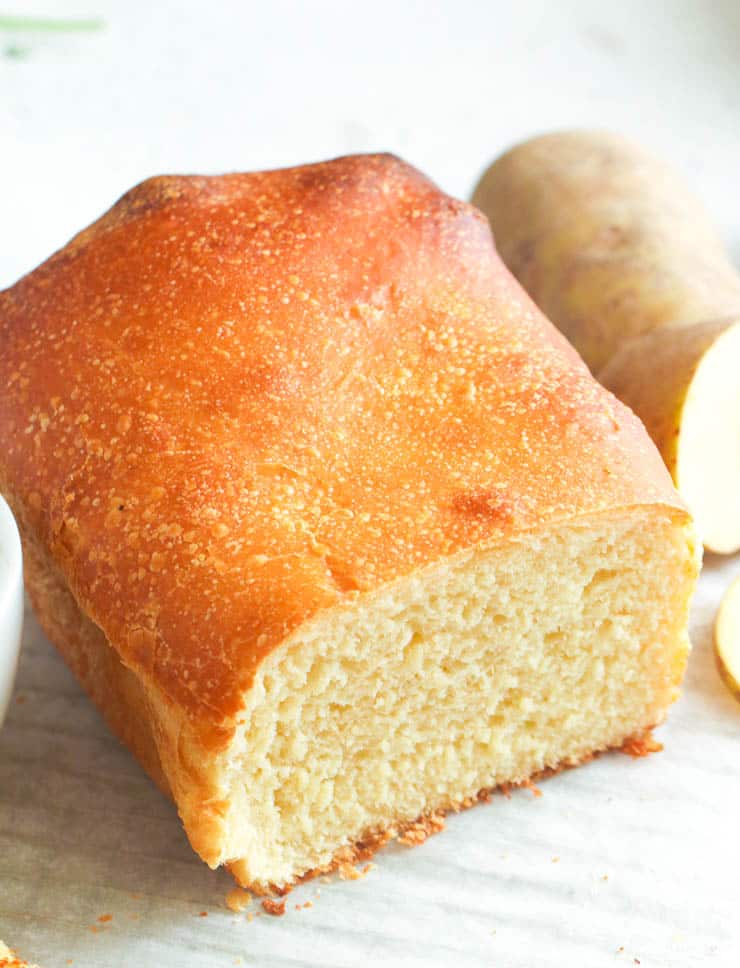
How To Make Potato Bread
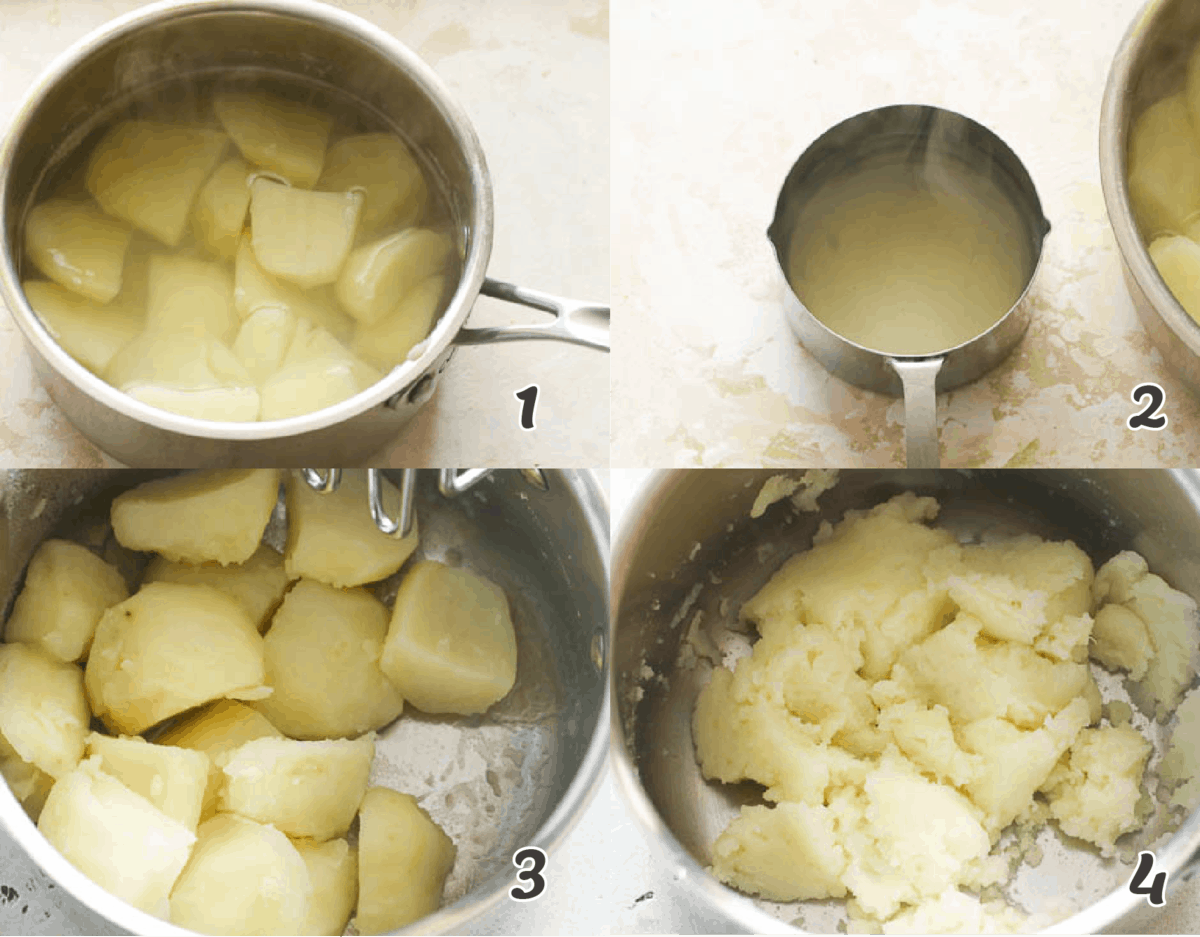
Boiling the Potatoes
- Prep – Peel and cut the potatoes into chunks, then add potatoes into a medium saucepan. Water should cover the potatoes at least an inch.
- Cook – until tender and soft – about 10 minutes.
- Drain potatoes and reserve about ⅔ cup of the water.
- Mash cooked potatoes and set them aside to cool.
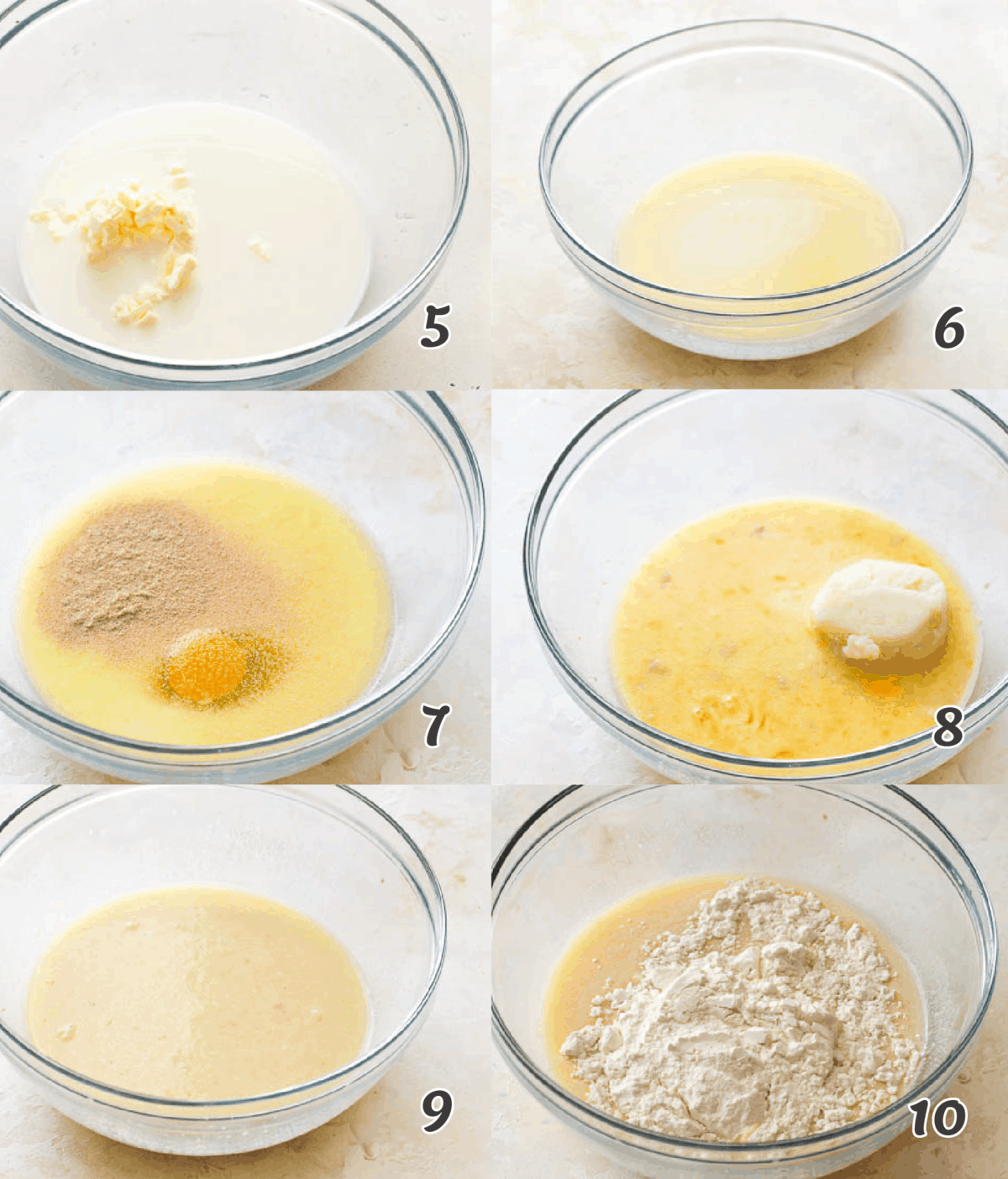
Mixing the Batter
- Combine Ingredients – Meanwhile, in a microwave-safe medium bowl, combine milk, with the butter pieces, sugar, salt, and microwave for about a minute. Stir until everything is melted.
- Potato Water – Add the reserved potato water. If the mixture is too hot, let it cool.
- Yeast and Egg – Transfer mixture to a large bowl, add the yeast and egg.
- Mashed Potatoes – Whisk until the ingredients are thoroughly mixed, then add the mashed potatoes, and continue mixing. Next, add the all-purpose flour a cup at a time. Be careful when adding flour – stop when you can easily form a soft dough.
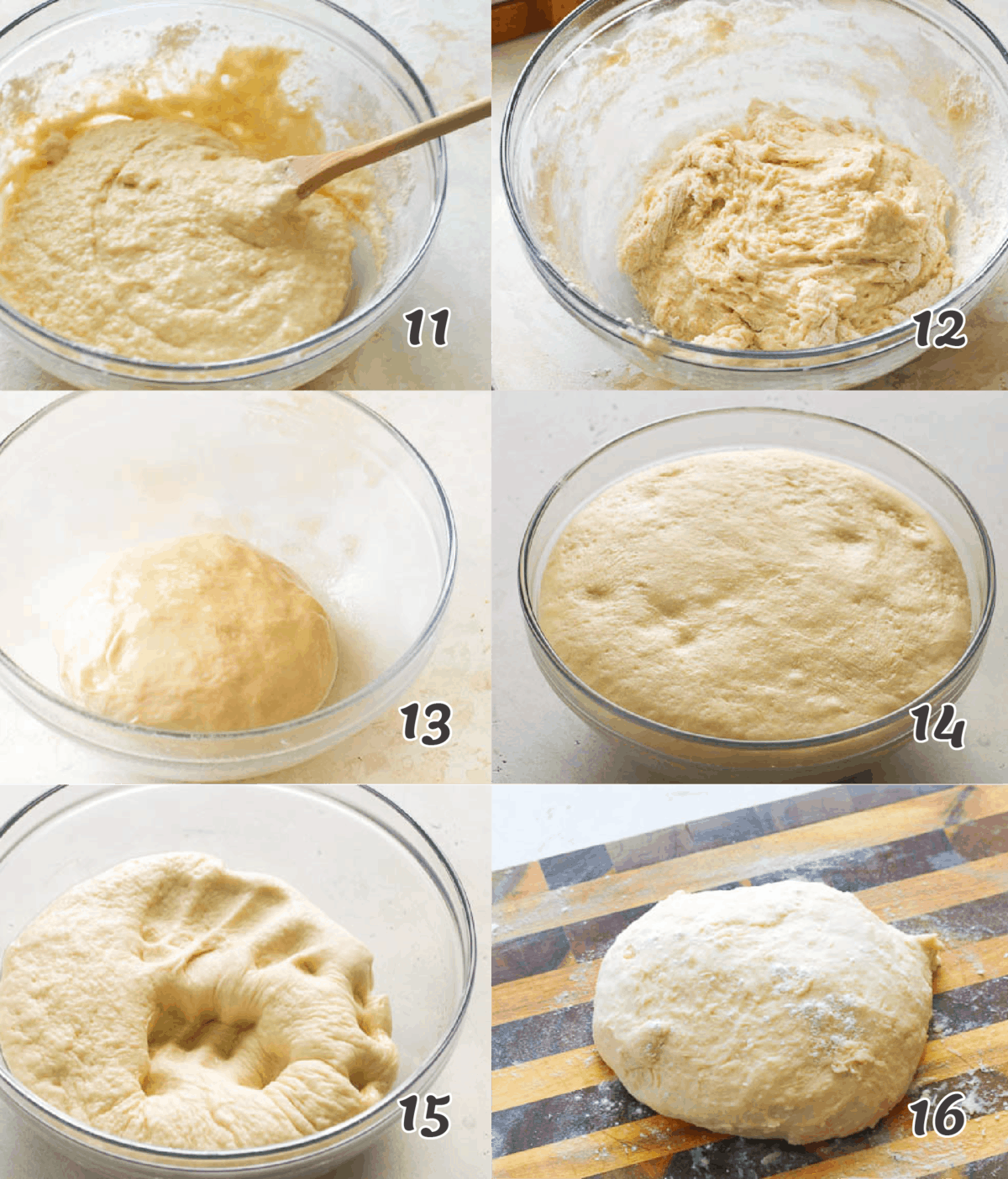
Making the Dough
- Knead – Transfer dough on a lightly floured surface. Knead for about 6-8 minutes.
- Let Rise – Place dough in a greased bowl, turning once to coat the dough. Cover loosely with a clean cloth and let it rise in a warm place for 1 ½ to 2 hours or until doubled.
- Punch & Divide Dough – Punch the dough down. Working on a lightly floured surface, divide the dough in half.
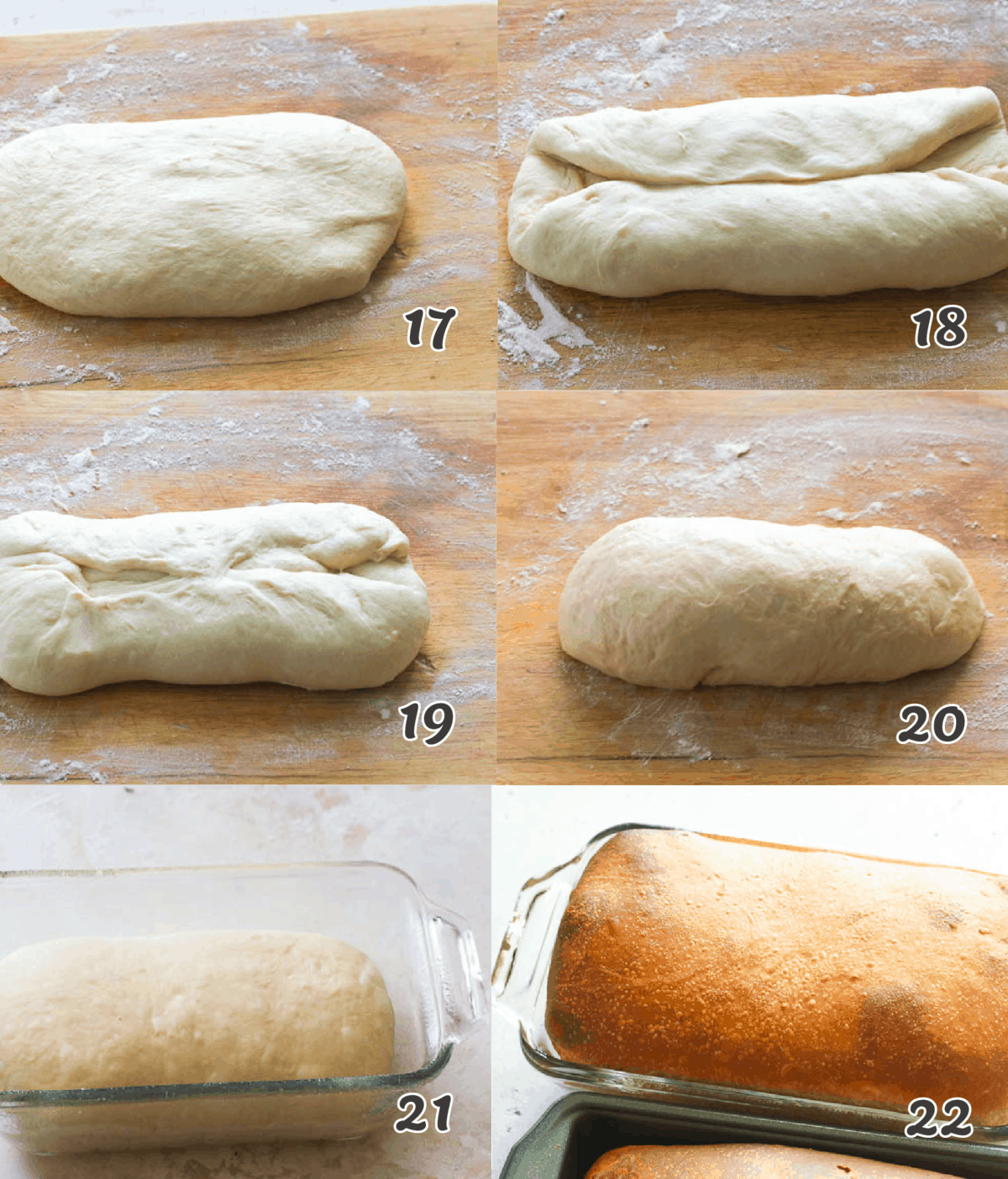
Working with the Dough
- Flatten – Flatten the dough into a rectangle, then fold a third of the dough on top of itself. Quickly fold the bottom third down so that it overlaps the other layers. (Photo 19)
- Allow to rise again – Pinch the dough to seal where the layers meet to close it up. Lift the dough and place it into two greased 9×5 inch loaf pans. Allow to rise for an additional 30 minutes or until the dough has risen 1 inch above the pans. (Photos 20 – 21)
- Bake at 350 degrees F (175 degrees C) for about 30-40 minutes. If the bread is browning too fast, tent with foil paper. You can easily check for doneness by using a thermometer. An instant-read thermometer inserted into the center of the bread should read 195°F to 200°F.
- Let cool and take a bite! Take out the loaf pans and transfer on to a rack, let them cool completely before slicing. Spread it with butter and enjoy!
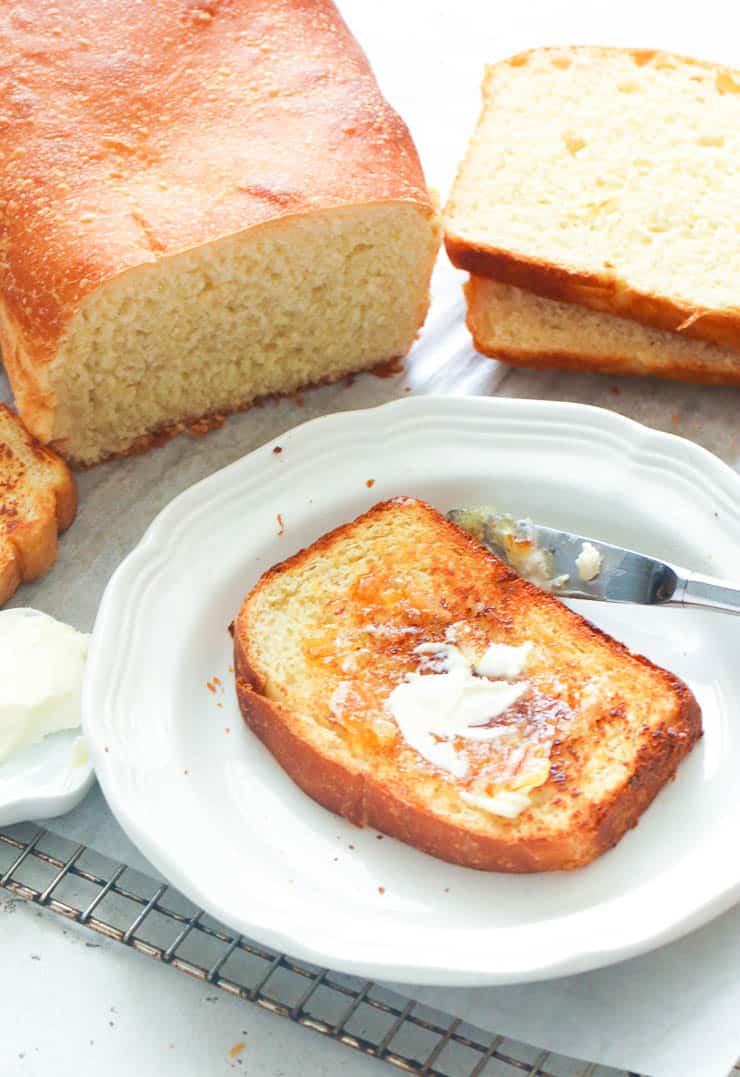
Watch How To Make It
[adthrive-in-post-video-player video-id=”crCorEem” upload-date=”2020-10-09T06:00:00.000Z” name=”Potato Bread” description=”Fluffy, flavorful, and fully loaded with nutrients, complete your breakfast with this easy to make POTATO BREAD. This baked goodie is a tastier alternative to your regular white bread.” player-type=”collapse” override-embed=”false”]
Potato Bread
Ingredients
- ¾ pounds (340.2g) russet potatoes , (mashed 1 cup)
- ⅔ cup (158ml) water from potatoes
- 1 cup (240ml) milk
- 4 ounce (113.4g) unsalted butter
- ⅓ - ½ cup (66.67g-100g) granulated sugar
- 3 teaspoons (15g) salt
- 1 tablespoon (8.5g) instant yeast
- 1 egg , lightly beaten
- 5 ½ - 6 cups (687.5g-750g) all-purpose flour
Instructions
- Peel and cut the potatoes into chunks, then add potatoes into a medium saucepan. Water should cover the potatoes at least an inch. Cook until tender and soft - about 10 minutes. Drain potatoes and reserve about ⅔ cup of the water. Mash cooked potatoes and set aside to cool.
- Meanwhile, in a microwave-safe medium bowl, combine milk, with the butter pieces, sugar, salt, and microwave for about a minute. Stir until everything is melted. Add the reserved potato water. If the mixture is too hot, let it cool.
- Transfer mixture to a large bowl, add the yeast and egg. Whisk until the ingredients are thoroughly mixed, then add the mashed potatoes, and continue mixing.
- Next, add the all-purpose flour a cup at a time. Be careful when adding flour - stop when you can easily form a soft dough.
- Transfer dough on a lightly floured surface. Knead for about 6-8 minutes.
- Place dough in a greased bowl, turning once to coat the dough. Cover loosely with a clean cloth and let it rise in a warm place for 1 ½ to 2 hours or until doubled. Punch the dough down.
- Working on a lightly floured surface, divide the dough in half.
- Flatten the dough into a rectangle, then fold a third of the dough on top of itself. Quickly fold the bottom third down so that it overlaps the other layers. Pinch the dough to seal where the layers meet to close it up.
- Lift the dough and place into two greased 9x5 inch loaf pans. Allow to rise for an additional 30 minutes or until the dough has risen 1 inch above the pans.
- Bake at 350 degrees F (175 degrees C) for about 30-40 minutes. If the bread is browning too fast, tent with a foil paper.
- You can easily check for doneness by using a thermometer. An instant-read thermometer inserted into the center of the bread should read 195°F to 200°F.
- Take out the loaf pans and transfer on to a rack, let them cool completely before slicing. Spread it with butter and enjoy!
Tips & Notes:
- Please keep in mind that nutritional information is a rough estimate and can vary greatly based on products used.
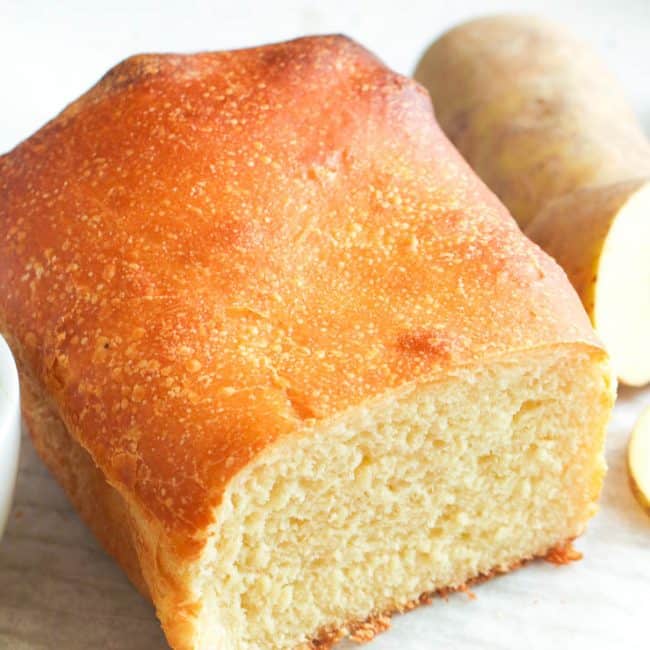
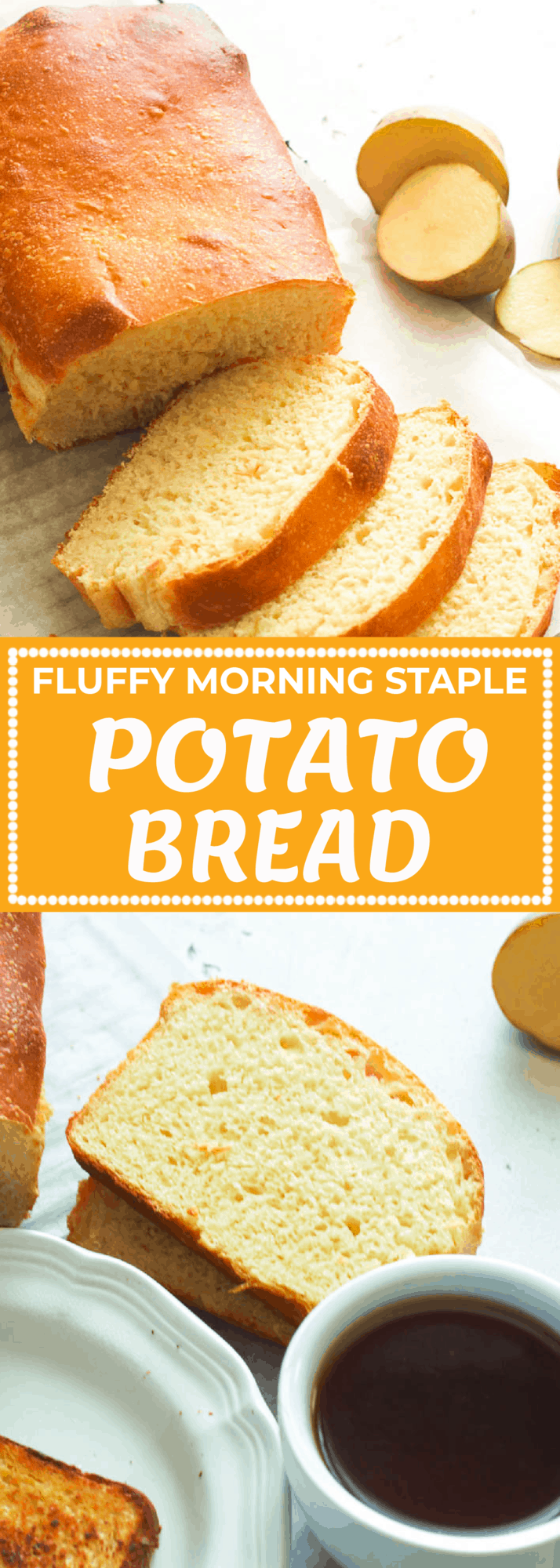
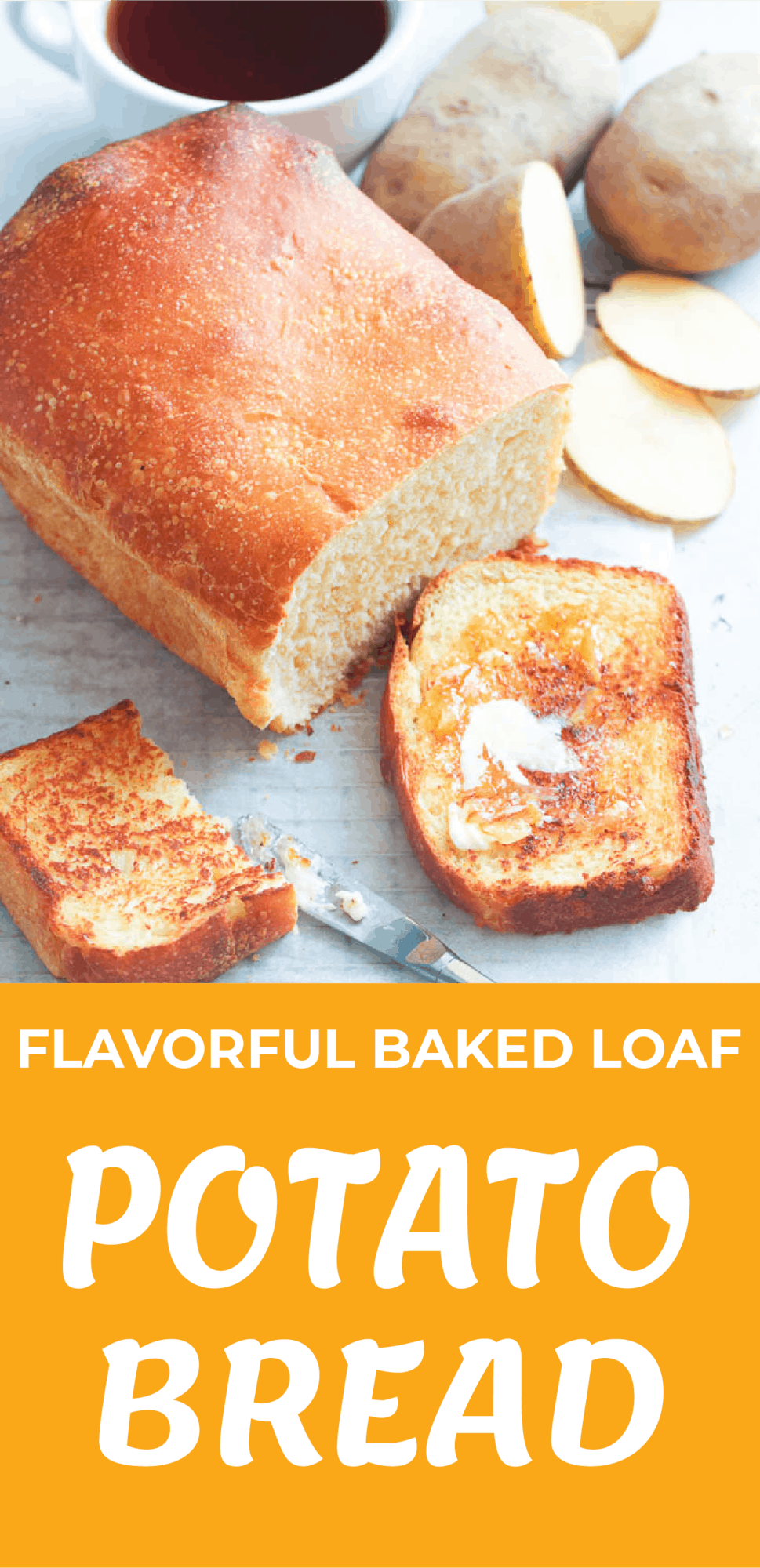
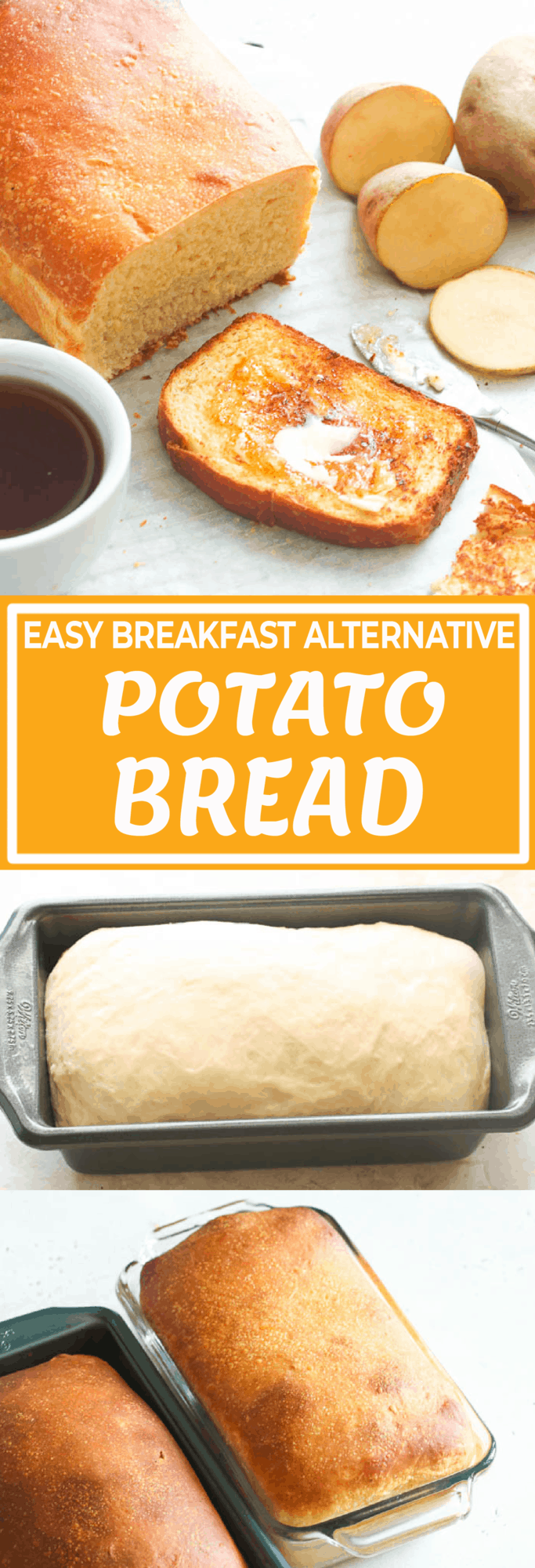

Ron P. says
Thanks so much for this fantastic recipe. I chose it over many others because the ingredients seemed to be the right ones for making the kind of potato bread that I used to eat when I was a youngster. I am a novice baker and my bread turned out so soft, fluffy, and tasty, that “I can’t believe that I baked it!” This recipe is a winner and easy to follow. I now have found my go-to potato bread recipe.
imma africanbites says
I’m so happy for you, Ron. And thank you for taking the time to let me know.
Abiola says
I loved this recipe the first time I made it and so excited to be making it again today. Currently baking in the oven but I am certain it will come out perfect. Thanks for sharing this magic.
N says
Hello!
I was thinking to make one loaf and the other “loaf quantity” in small buns (for soups and salads). I’ll most likely freeze the majority. It doesnt matter what shape i bake them in correct? Thank you.
ImmaculateBites says
Hello ! No it doesn’t. You won’t believe how many shapes and sizes I have tried out . And it all works! Happy Friday!!
N says
Thank you very much for this recipe!
Soft, moist and delicious. I made a loaf of bread with one half and buns with the other. Husband & i loved it.
N says
Happy weekend to you too:)
Christian Johnson says
Looks so good. i have arthritic hands, okay to prep using the “dough” cycle of my bread machine?
ImmaculateBites says
Thanks Christian. I don’t see why not .